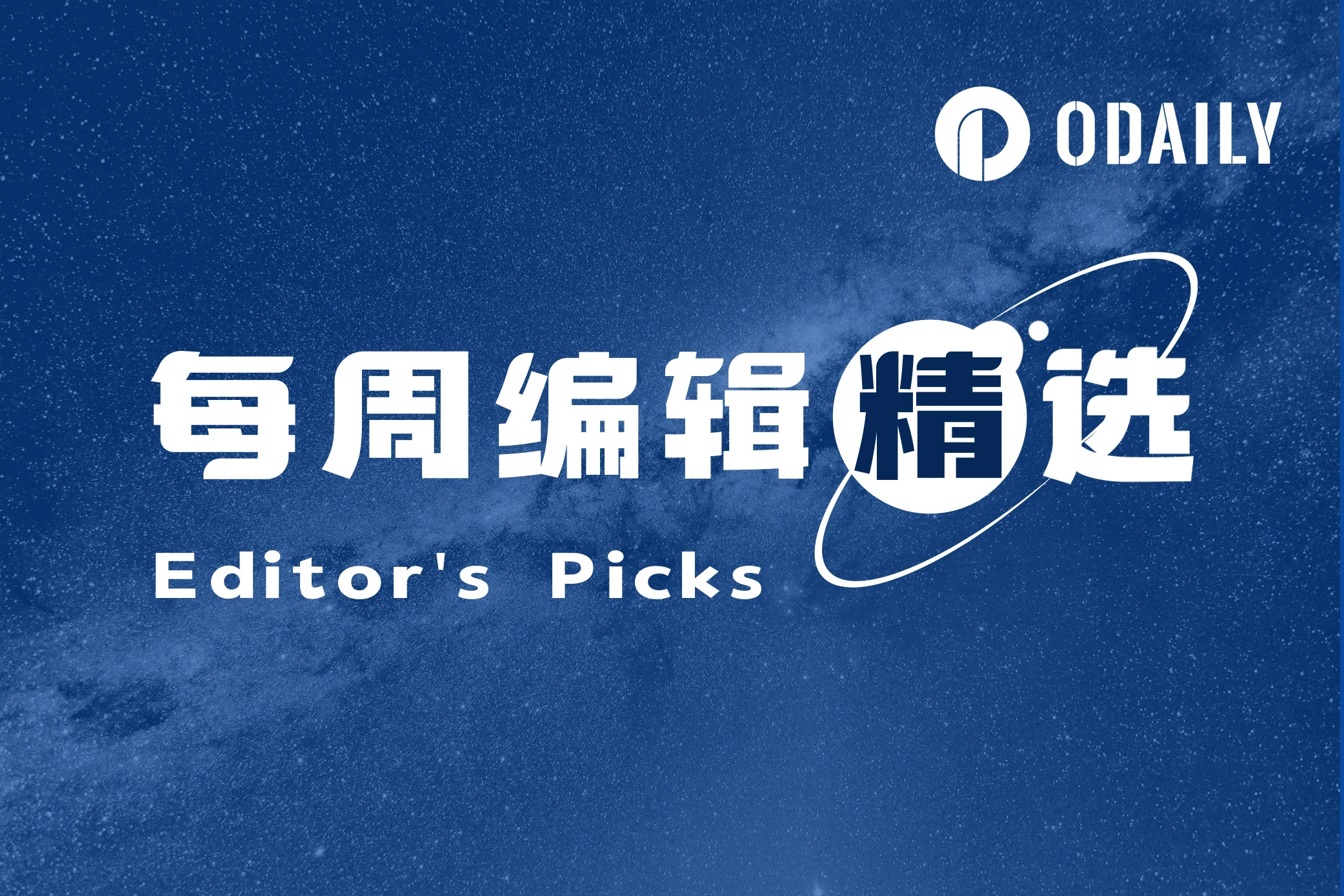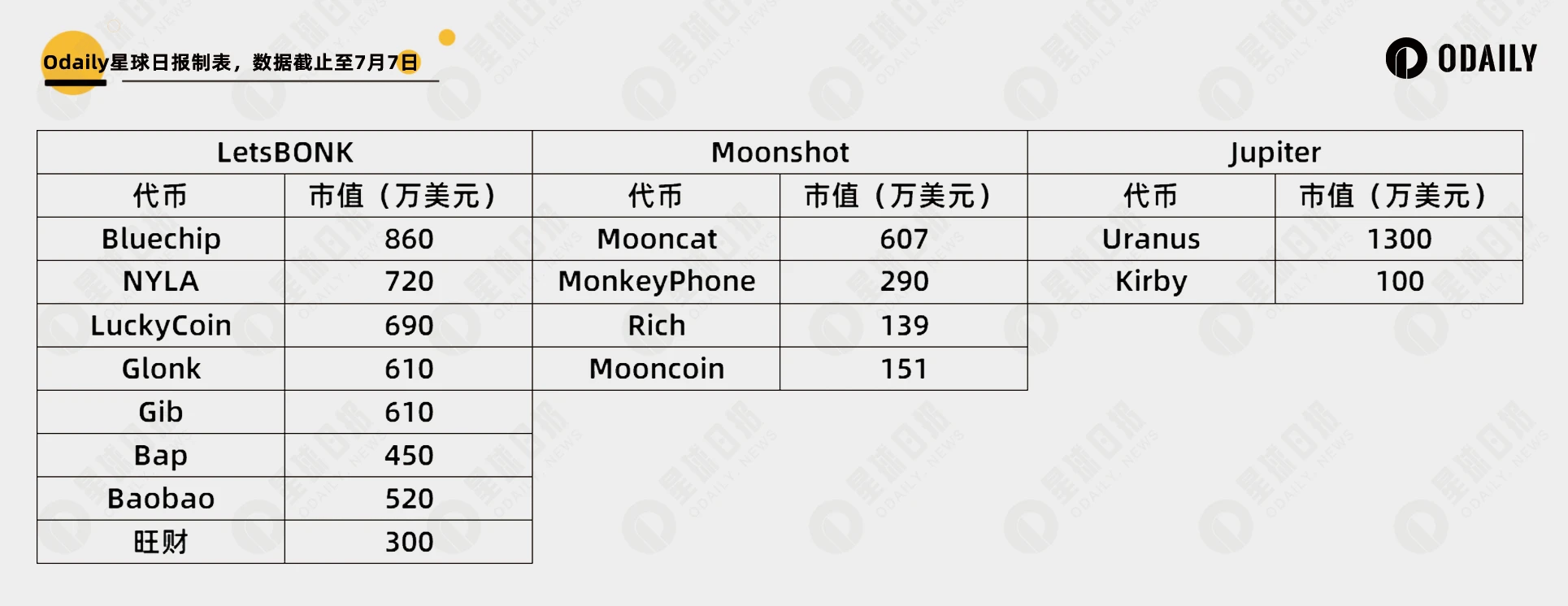Weekly Editors Picks is a functional column of Odaily Planet Daily. In addition to covering a large amount of real-time information every week, Planet Daily also publishes a lot of high-quality in-depth analysis content, but they may be hidden in the information flow and hot news, and pass you by.
Therefore, every Saturday, our editorial department will select some high-quality articles that are worth spending time reading and collecting from the content published in the past 7 days, and bring new inspiration to you in the crypto world from the perspectives of data analysis, industry judgment, and opinion output.
Now, come and read with us:

Investment and Entrepreneurship
Reflections after the surge: Which stage of the macro cycle are we in?
Comparison of liquidity in 2017, 2021 and 2025:

🔴 means not activated, 🟠 means slightly activated, and 🟢 means strongly activated. Also note that the last lever will control the other 11 levers.
We have not yet entered a new round of massive money printing.
The authors also proposed four major observation signals:
Inflation = 2%, and policy announcement risks are balanced; Focus: Fed/ECB statements shift to neutral wording; Significance: Clearing the last rhetorical hurdle before rate cuts.
QT suspended (100% reinvestment of maturing bonds); Focus: FOMC/ECB announced full reinvestment; Significance: Stop pumping and turn to neutral reserves.
FRA-OIS spread is greater than 25 basis points, or repo rate soars; Focus: Three-month FRA-OIS or GC repo transactions jump to more than 20 basis points; Significance: It indicates dollar funding pressure and often forces liquidity intervention.
The Peoples Bank of China cut the reserve requirement ratio by 25 basis points across the board; Focus: The reserve requirement ratio dropped to below 6.35%; Significance: The release of 400 billion base currency is often the first domino in the easing of emerging markets.
Multiple favorable factors have combined to accelerate the pace of the industry. On the one hand, the global macro environment has stabilized and tariff policies have eased, providing a more friendly background for capital flow and asset allocation. On the other hand, many countries and regions around the world have introduced a number of friendly policies for the development of the cryptocurrency industry. Traditional financial markets have begun to actively embrace cryptocurrencies, linking token structures with traditional financial assets to achieve the financialization of capital structure.
The narrative of on-chain derivatives continues to heat up, with Hyperliquid becoming a phenomenal leader, with daily trading volumes repeatedly approaching or surpassing some centralized exchanges, and native tokens continuing to outperform the market, becoming one of the strongest performing assets.
Reminiscences of a Trader: How I Made 100% Profits Using Soross Methods
Betting big on a rare opportunity: PEPE is listed on Robinhood and Coinbase.
When VCs press the sell button: The wealth transfer game behind the Polychain sell-off
Recently, Polychain sold $242 million worth of TIA.
The hatred directed solely at Polychain is undeserved: Polychain’s job is to take risks and reap rewards, just like everyone else.
There is a big problem with profitability in cryptocurrencies: most protocols themselves do not make money, and they do not consider profitability at all. The main problem in the industry is that some teams treat token sales as profits and build business models based on them without considering the consequences. Token economics is not the main problem, the tokens are.
Furthermore, technological innovation has nothing to do with token prices.
A comprehensive valuation method should be based on the traditional cash flow of the enterprise, with on-chain income (staking income minus handling fee destruction) as the core element verification. Continuously paying attention to the staking yield, real-time flow indicators and scenario analysis can keep the valuation method up to date, and only in this way can traditional funds be attracted to enter the market.
The token transparency framework aims to improve market clarity and attract more institutional funds into the token market.
Equity tokenization is reshaping financial markets, improving efficiency and expanding access to capital globally.
The facts obscured by the noise of emotions, algorithms and fake KOLs: interaction ≠ success, venture capital ≠ value, hype ≠ growth.
What successful projects actually do is: focus on building something people really want to use; set a reasonable price for the token when it is launched; communicate sincerely with the audience; and measure what really matters, not just the number of likes.
Also recommended: 2025 Web3 Job Market Report: 10,000 people competing for 28 positions, how can you win?
Policy and Stablecoins
Stablecoin, a cashless payment reform for 5 billion people
The story of large-scale stablecoin adoption in Latin America, Southeast Asia, and Africa.
Also recommended: Trump Media Group applies for crypto ETFs, US SEC promotes unified standards to simplify the approval process and Technology Accelerationists are ecstatic: a summary of the latest developments in stablecoins, there are many things you don’t know (and projects) .
Airdrop Opportunities and Interaction Guide
This weeks featured interactive projects: Kaitos Cysic and Bless are online; Mawari earns points
Meme
Official platforms emerge, what concepts are being hyped in the post-Pump era?
The token concept has no main line, and multiple official endorsements have become the core elements.

The amount of coins issued has surpassed Pump.fun for the first time. What is on Letsbonk.fun?
The market share has reached 51%, and the platforms leading projects include USELESS, Hosico, and IKUN.
Ethereum and Scaling
Policy boundaries are becoming clearer, institutional capital is flowing back, EF is self-correcting, on-chain data is diverging, and industry narratives are refocusing.
Ethereum needs a new growth narrative to break through the 10,000 mark
Many of the challenges Ethereum faces can be summarized into one core theme: there is a broken value capture supply chain between Ethereum’s utility and ETH’s value.
If ETH’s superior value capture supply chain becomes a core part of the ETH narrative, as it will be in 2021.
Rollup is synchronously composable, so no network bridge is required. Lower Layer 1 block times allow market makers to offer lower spreads, resulting in greater on-chain trading volume. Price execution is significantly improved.
Ethereum’s robust MEV infrastructure can eventually be used to provide traders with best execution (on Memecoin etc) rather than the ~20% wool they find elsewhere.
Cross-chain liquidity flows back to Layer 1, and Native+Based Rollup can seamlessly access Layer 1 liquidity, and trading volume increases accordingly.
Based+Native Rollup consumes 10 to 100 times more gas than the current L2 while providing shared liquidity and composability, which means that all these activities on Rollup actually consume a lot of ETH.
Tokenized assets on Rollups are accessible to the rest of the Ethereum ecosystem. Ethereum’s position as a tokenized asset issuance and trading platform will be further enhanced.
As a result, the feedback loop between Ethereum’s utility and ETH value capture will be restored.
Multi-ecology
More than just trading, HyperLiquids early GameFi and SocialFi projects
CeFi DeFi
BlackRock BUIDL Fund: How it affects the RWA landscape
Product essence: BUIDL is fundamentally a regulated traditional money market fund (MMF), whose underlying assets are highly liquid, low-risk cash, U.S. Treasury bonds and repurchase agreements. Its innovation lies in tokenizing fund shares into BUIDL tokens that circulate on the public blockchain, realizing the on-chain recording, transfer and income distribution of ownership.
Business process: The investment process embodies the core idea of licensed finance. Investors must be qualified purchasers as defined by U.S. securities laws and pass Securitizes KYC/AML audit, and their wallet addresses are included in the whitelist of smart contracts. The subscription (minting tokens) and redemption (destroying tokens) processes connect the off-chain fiat currency circulation with on-chain token operations. Among them, the USDC instant redemption channel launched by Circle is a key innovation. It solves the fundamental contradiction between the traditional financial settlement cycle and the 24/7 instant liquidity demand of the crypto world through a smart contract.
Market impact and strategic significance: The launch of BUIDL is not only a key step in BlackRocks digital asset strategy, but also plays a huge catalytic and validation role in the entire RWA tokenization field. It quickly surpassed early competitors and became the worlds largest tokenized Treasury fund. The growth of its asset management scale (AUM) was mainly driven by B2B demand for crypto-native protocols such as Ondo Finance and Ethena to use it as reserves and collateral. This shows that BUIDLs success does not come from traditional investors, but it accurately meets the DeFi ecosystems urgent need for compliant, stable, and interest-bearing on-chain US dollar assets, thereby building itself into the cornerstone of institutional-level DeFi.
Written after the hacker attack: Is there any risk-free return in the DeFi world?
There is no true risk-free rate in DeFi.
The pseudo-risk-free income options in DeFi include AAVE, Curve Finance, and tokenized US Treasury bonds. However, we must also realize that the supply and demand mechanism of AAVE, Curves income model that relies on transaction volume, and the security of tokenized US Treasury bonds cannot completely avoid the potential risks of blockchain failures and what DeFi OGs dubbed crime hotbeds.
The article also introduces the risk characteristics and operating logic corresponding to each yield enhancement strategy in the DeFi protocol.
Carefully verifying on-chain data and taking your own risks will always be the first creed of DeFi.
Also recommended: The Lazy Mans Financial Management Guide | Upshift announces the first Acceleration Mission; Perena Vault opens for application (July 9) .
Web3 AI
AI 2027 in Vitaliks eyes: Will super AI really destroy humanity?
Hot Topics of the Week
In the past week, ETH broke through the 3,000 mark and BTC hit a new high ; Musk founded the American Party and related memes soared in a short period of time. The American Party will embrace Bitcoin and fiat currency has no hope; pump.fun launched the PUMP token through the initial token offering ( coin issuance interpretation ); BR crashed, Bedrock said it would disclose the LP address to clarify that it had not withdrawn funds , and proposed special airdrop compensation ; GMX was stolen for more than 40 million US dollars ; hackers later returned the stolen money ; ZachXBT once again criticized Circle for doing nothing about hacking : GMX attackers used CCTP to transfer stolen funds to Ethereum;
In addition, in terms of policies and macro markets, the UAE officially clarified that digital currency investors are not eligible for golden visas; Chan Mo-po: Hong Kong-listed ETP anchor assets include digital assets, and also track US stock products such as Coinbase; Yiwu local association responded to stable currency settlement : almost none, low recognition makes it difficult to form widespread circulation;
In terms of opinions and voices, Musk: US Treasury Secretary Bessant is a puppet of Soros . He is a student of political science and cant even learn mathematics; Matrixport: The market lacks new driving factors , and retail trading activity continues to be weak; Bitcoin Magazine: Beware of the bubble of Bitcoin Vault Company, Strategy will eventually fall below the level of net assets per share ; Robinhood spokesperson: OpenAI is indirectly held through a certain SPV, and the price of OpenAI tokens is linked to the value of shares held by the SPV ; STIX founder: More than a dozen WLFI big holders have received over-the-counter selling orders , but there are very few buyers; Arthur Hayes: The cottage season is coming , and positions have been increased to be bullish; OKX Star: Only about 1% of users will receive inquiries about the source of funds or work and residence information , in order to ensure that the platform is not abused; Pledge TON in exchange for UAE golden visa was officially denied ;
In terms of institutions, large companies and top projects, Strategy hinted at suspending share purchases ( interpretation of impact ); FTX liquidation excluded Chinese creditors ( self-rescue record ); Greenland Holdings: Greenland Jinchuang holds Hong Kong license No. 4 and license No. 9, supporting virtual asset business ; Ethereum Foundation proposed L1 zkEVM real-time proof standard to promote the mainstreaming of zero-knowledge proof; Truth Social will launch utility tokens; Polymarket is again embroiled in truth controversy due to Zelensky wearing a suit;
In terms of security, Shenzhen: Be wary of illegal fundraising in the name of stablecoins ; Beijing Internet Financial Industry Association: Be wary of illegal fundraising using new concepts such as stablecoins ; ZachXBT: Do not undertake Sui ecosystem-related cases and are not supported in this ecosystem... Well, its another week of ups and downs.
Attached is a portal to the “Weekly Editor’s Picks” series.
See you next time~










